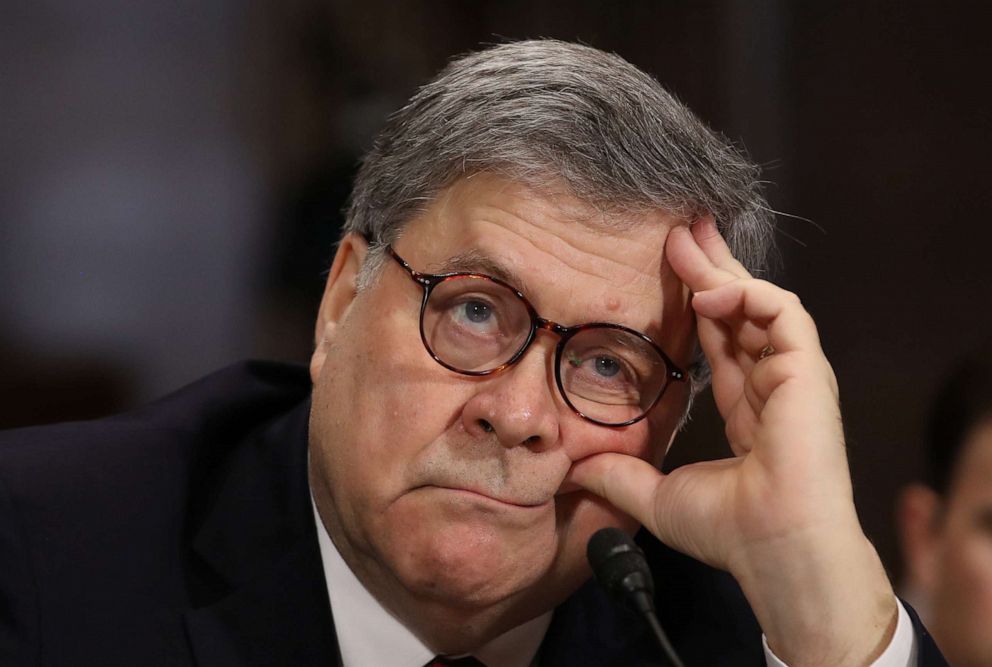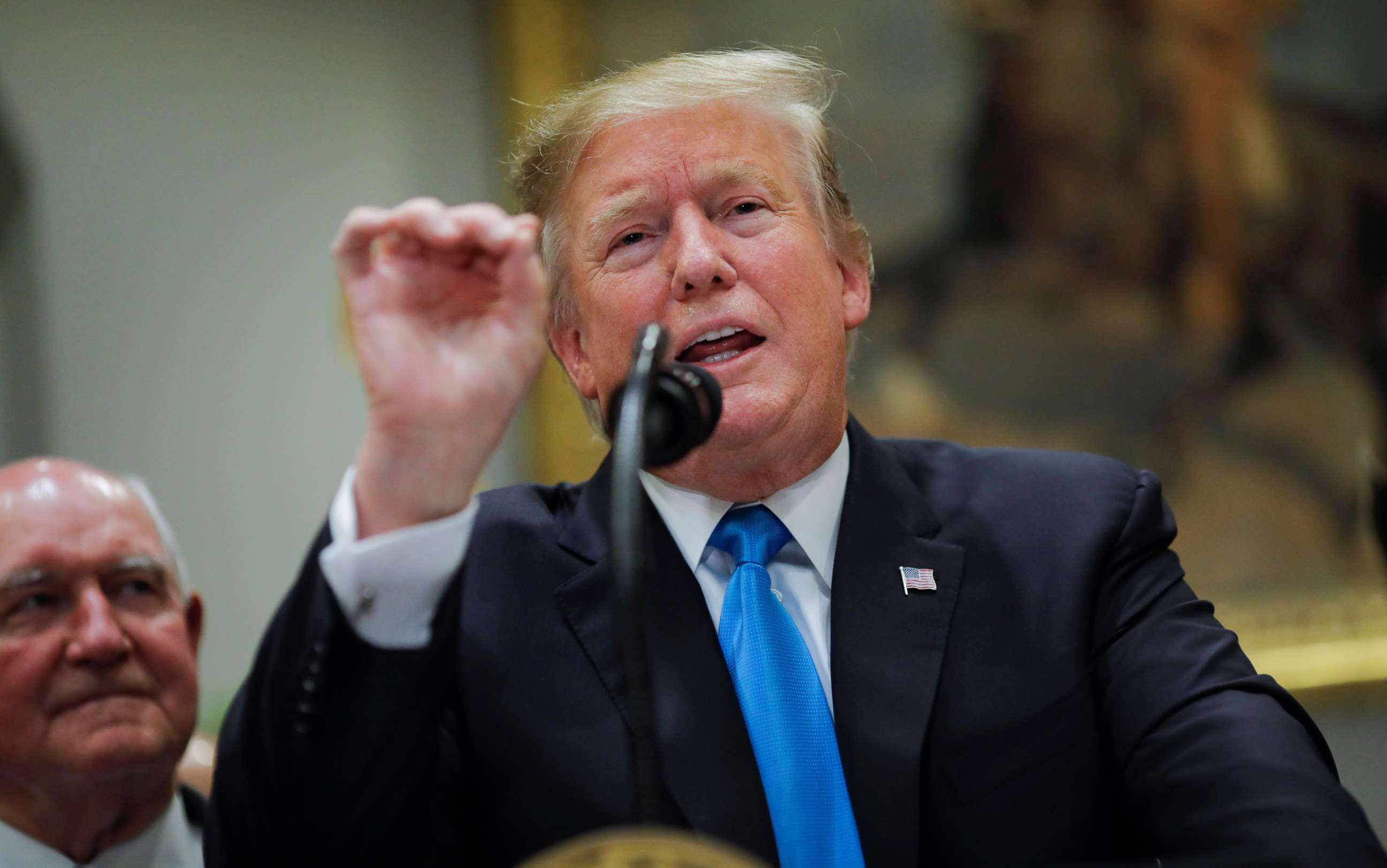How the president granted the AG power to declassify documents: Analysis
The U.S. Personal Security Program (PSP) dates back to the late 1880s.
In a recent move that shocked some and was applauded by others, President Donald Trump took the highly unusual step last Thursday of granting Attorney General William Barr the power to declassify the most closely-guarded secrets of our nation’s 15 other intelligence agencies.
The president granted this authority in order to shed light on the intelligence agencies' alleged role in the Russia investigation, especially the role of the FBI.
Now, Barr has the power to declassify any of this information – -which may or may not offer insight into how our national security apparatus works.
How could he do that?
The president has long alleged that there was a concerted effort by former President Barack Obama’s administration to use U.S. Intelligence agencies to “spy” on his campaign and interfere with his election efforts. To try and prove that to the American people, the attorney general reportedly asked the president for broad declassification authority to facilitate his review of the intelligence agencies’ involvement in the early stages of the Russia investigation, and be able to declassify certain aspects for the American people's review.
The U.S. Personal Security Program (PSP) dates back to the late 1880s. The system, in sum, is about controlling access to critical information.

During World War II, many of the building blocks of our nation’s PSP program began to take form. In 1953, Executive Order 10450 formally mandated security clearance background investigations for all federal employees -- to ensure that they were “reliable, trustworthy and of good character.”
Since then, the system has been modernized but essentially holds to the same principle that access to classified information should only be allowed to those that are “reliable, trustworthy and of good character.”
As has long been reported, the Russia Investigation, the Mueller probe and multiple Congressional investigations have relied on a deep dive into our nation’s national security apparatus and its classified information in order to try and understand what was happening in and around the 2016 campaign. This type of review and our nation’s classification system are used to try and protect the means, methods and sources of our intelligence apparatus’s capabilities.
When this type of information is released, as was done with the Mueller report, a careful review is conducted and -- if information is classified -- it has to go through a declassification process in order for it to be released. This classification and declassification system are used to protect our nation’s sensitive information.
To classify documents, a government body must determine that material contains sensitive information that must be protected -- which may include the “sources and methods” used to obtain that information.
Access is restricted by law or regulation to particular groups of people with the necessary security clearance and the need to know. Intentional mishandling of the material can incur criminal penalties. A formal security clearance is required to view or handle classified documents or to access classified data. The department or agency head in the federal government is vested with this classification authority.
Generally, there are three main levels of security clearances that the federal government uses to control access to information ()
TOP SECRET – Will be applied to information in which the unauthorized disclosure could reasonably be expected to cause exceptionally grave damage to the national security.
SECRET – Will be applied to information in which the unauthorized disclosure could reasonably be expected to cause serious damage to the national security.
CONFIDENTIAL – Will be applied to information in which the unauthorized disclosure could reasonably be expected to cause damage to the national security.
Law Enforcement also sometimes uses a LAW ENFORCEMENT SENSITIVE classification which in reality, is in the confidential realm.
Additionally, the United States Department of Energy (DOE) issues two levels of security clearances:
Q Clearance – allows access to classified information up to and including TOP SECRET data with the special designation: Restricted Data (TS//RD) and special Q-Cleared "security" areas.
L Clearance – allows access to classified information up to and including SECRET data with the special designation: Formerly Restricted Data (S//FRD) and special L-Cleared "limited" areas.
Those security clearances are typically issued by one of the following U.S. government agencies: the Department of Defense (DOD) which issues the most clearances, the Department of State (DOS), the Department of Homeland Security (DHS), the Department of Energy, the Department of Justice (DOJ), the National Security Agency (NSA), and the Central Intelligence Agency (CIA).
TOP SECRET is generally the highest level clearance in the federal government. There is really no clearance level above Top Secret but in order to further control access to sensitive information and limit some information to those that truly “need to know” the government has some “add on” certifications, which are based more on what type of background investigation was conducted on the individual versus what type of information they are allowed to see.

A background investigation completed for Sensitive Compartmented Information (SCI), as most on the President’s Detail in the Secret Service are granted, indicate that those agents had a Single Scope Background Investigation (SSBI) successfully completed.
FBI agents also undergo a similarly-exhaustive background investigation that qualifies them for a Top Secret Clearance that may also include additional clearance determinations. For the military personnel at the White House, that background investigation is known as "Yankee White."
In order for information to be declassified, Executive Order 13526 -- signed by Obama -- lays out the protocols. They include that the originating classification agency has the sole power to declassify information whenever it deems that the information no longer contains critical information or is in the interest of the United States.
As an example, in a terrorism case brought to trial, some of the evidence may have been obtained through classified means. The means and sources may still need to be protected but the threat information or tools and tactics used by the terrorist need to be used as evidence. In this case, the DOJ may declassify the evidence needed for the prosecution but still classify and protect the way that information was obtained.
The main protocol that the executive order changed was the creation of an Automatic Declassification process for all documents that are 25 years or older. Agencies can still ask for information to remain classified if, in general, if its releases would still create a significant harm to the United States.
Outside of that, any agency may declassify information it had previously classified -- which is where the situation with Barr may get slightly complicated.
Although the president is the ultimate classification authority, by law, federal departments and agencies do retain legal oversight over their classified information.
In the case of the FBI, any classified information that the agency supplied to the DOJ may have to be declassified by the FBI -– if they agree to it.
Of course, since most of the information contained in the Mueller report was legally provided to DOJ by other agencies –- including the FBI, which falls under the umbrella of the DOJ, the AG may have an inherent right to declassify it.
One thing remains clear: classified information must always be handled carefully but if the DOJ classified it -– they most certainly can declassify it.
Donald J. Mihalek is an ABC News contributor, retired senior Secret Service agent and regional field training instructor who also serves as the executive vice president of the Federal Law Enforcement Officers Association Foundation.
Richard Frankel is an ABC News contributor and retired FBI special agent who was the special agent in charge of the FBI's Newark Division and prior to that, the FBI's NY Joint Terrorism TASK force. He is currently the Vice President of Investigation for T&M Protection Resources.




